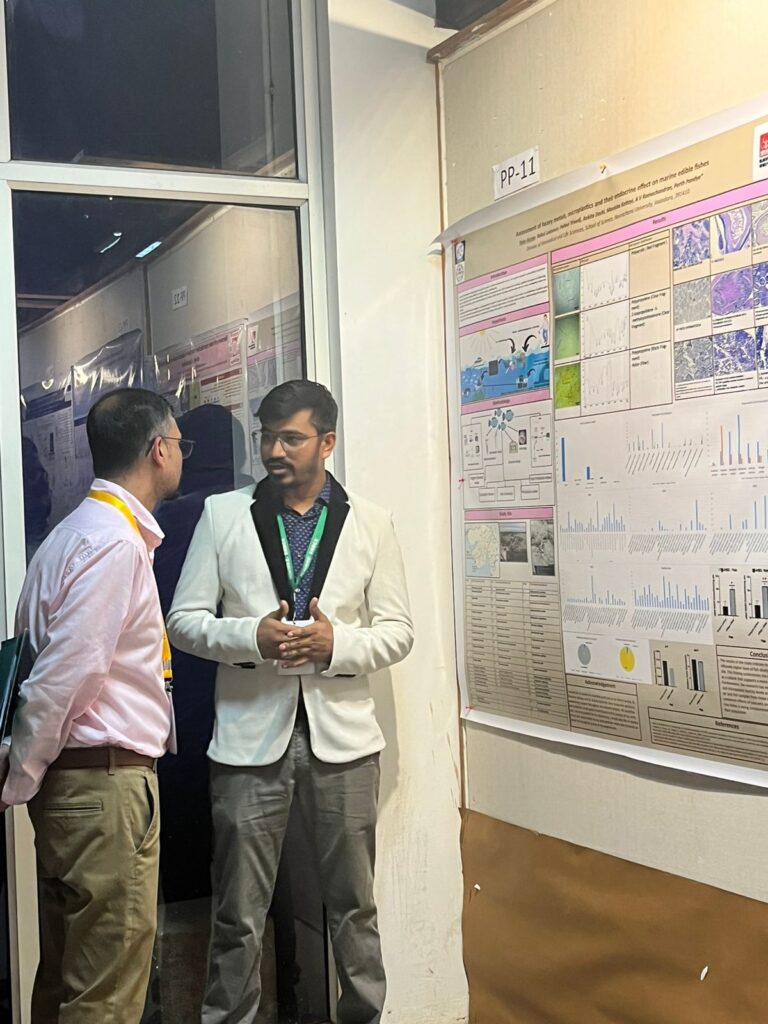The Society for Reproductive Biology and Comparative Endocrinology (SRBCE) founded on April 1980 at University of Madras under the leadership of Prof. P. Govindarajulu. Their vison is to gather all researchers in the field of Reproductive Biology and Comparative Endocrinology under one umbrella, to know each other, get together, discuss, exchange views and promote collaborative research in the areas of Reproduction and Endocrinology. Over a time, they have conducted amazing scientific symposia, seminars and meetings to suggest ways and means to improve teaching and research in Reproductive Biology and Endocrinology. They also hold Annual Symposia/Conferences to present scientific papers and to arrange Round Table discussion among leaders and budding scientists to recommend Thrust Areas of Research in the fields of Reproduction and Endocrinology to National Funding Agencies.
Our journey for conference began on the 13th of September, in the evening when we gathered to register for the conference. At the registration desk, we received the program schedule with welcoming introduction to the International Conference on Molecular Medicine, Reproduction and Endocrinology (ICMMRE) and keynote address by prof. T. P. Singh from AIIMS, New Delhi on Structural basis of therapeutic application of innate immunity proteins. On the next day we stated session with keynote address by Padma Shri Dr. V. Mohan on the medicine of Diabetes and Where do we stand in India today? And many more talk were there. Such highly experience scientist was there they made very complicated topic into easily understandable topic.
I got the opportunity to present my research at the ICMMRE conference, where I displayed a poster that summarized my substantial environmental analysis work. The primary goals of this study were to further our understanding of the effects of pollutants on the environment through the use of gene expression, microplastics analyses, and heavy metal analyses. In order to identify particular genetic markers, I had to conduct PCR runs in addition to sample collection, preparation, and analysis for my practical performance.
I carefully gathered water and fish sample from a various location for the heavy metal analysis, and I used cutting-edge analytical method like Inductively coupled plasma mass spectrometry (ICP-MS) to find the quantities of heavy metals. Regarding Microplastics Analysis, I added to the expanding corpus of knowledge on this developing issue by creating a reliable technique for separating and measuring microplastics in environmental samples.
My presentation at the conference garnered considerable attention and led to fruitful discussions with fellow scientists and researchers. I received valuable feedback and insights that will inform the future direction of my research. The input and suggestions from esteemed colleagues further enriched my perspective and motivated me to continue exploring innovative approaches to address environmental challenges.
Overall, this experience at the international conference was a rewarding opportunity to share my work, collaborate with experts in the field, and gain a deeper appreciation for the global significance of environmental analysis. It has inspired me to refine and expand upon my research in order to contribute to a more sustainable and healthier environment.


Mr. Tejas Gurjar presenting his poster under the title “Assessment of heavy metals, microplastics and its endocrine effect on marine edible fishes”.